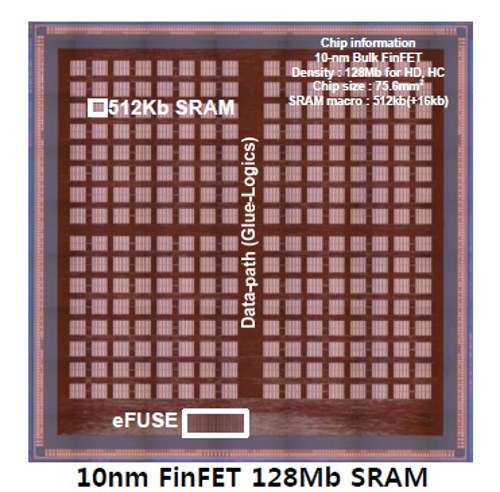
Posted on Friday, February 05 2016 @ 12:02 CET by Thomas De Maesschalck
Samsung showed off a 128Mb SRAM chip made on its 10nm FinFET process at the International Solid-State Circuits Conference (ISSCC). The South Korean conglomerate said its 10nm SRAM is 38 percent smaller than a similar part made on its 14nm process. Samsung plans to offer 10nm FinFET mass production by the end of the year. Full details
at EE Times.
Overall, the most important thing chip designers need to know is, “the [10nm] fin improves performance, but the back-end resistance does not improve [compared to 14nm], that’s the most challenging aspect of our 10nm finFET process,” said Taejoong Song, lead author of the Samsung SRAM paper in response to a question from a Synopsys engineer.
Back-end resistance will continue to increase through the 7nm node, Song said in a brief interview with EE Times before his presentation. “You expect with a new process everything gets better, but this is not the case,” he said.

